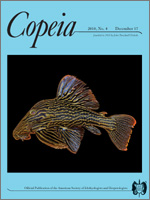We investigated sound production and the sonic motor system in the Pineconefish, Monocentris japonica. The hand-held Pineconefish produced one type of sound (main frequencies: 100–600 Hz) in both water and air. The sonic organ consists of the swimbladder and a pair of extrinsic sonic muscles originating from exoccipital of the cranium and supracleithrum and inserting on the anterodorsal surface of the swimbladder and partly on vertebrae. The sonic muscle is innervated by occipital nerve branches, not the spinal nerves. Injections of wheat germ agglutinin-conjugated horseradish peroxidase into the sonic muscle resulted in labeled sonic motor neurons ipsilateral to the injections. The labeled neurons were located in the ventral zone of the caudal medulla oblongata, forming a column of sonic motor neurons (or the sonic motor nucleus) from the level of the vagal nerve root to the rostral part of the third ventral root of the occipital nerve. The total number of motor nerve fibers contained in the right and left sonic nerve branches (standard length = 96 mm) were 363 and 369, respectively. We conclude that the sonic muscles of Monocentris japonica are innervated by approximately 700 sonic motor neurons located only in the caudal medulla oblongata.
How to translate text using browser tools
17 December 2010
Sound Characteristics and Sonic Motor System in the Pineconefish, Monocentris japonica (Beryciformes: Monocentridae)
Atsushi Onuki,
Tatsuya Takizawa,
Naoyuki Yamamoto,
Hiroaki Somiya
ACCESS THE FULL ARTICLE





